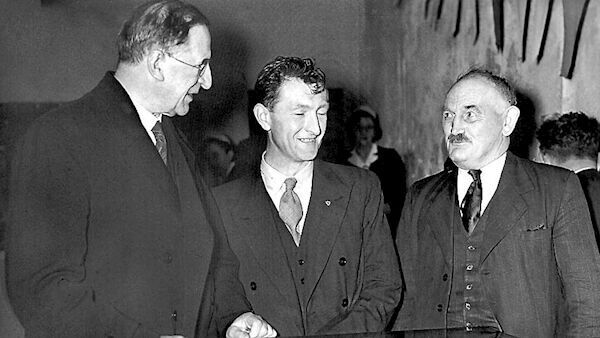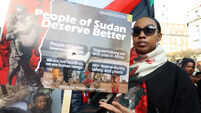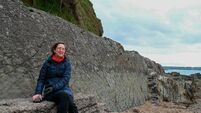Missing person file’s release sheds new light on boy’s disappearance

Edward Parsons is believed to have been executed after admitting to spying for British forces during the Irish Revolution period, write

The recent release of a missing persons file has shed new light on the disappearance of William Edward Parsons, a teenager, who was killed by the IRA in Cork in March 1922.
The file, released under a Freedom of Information request, was the result of an appeal by Parsons’ parents to find their missing son. The file also contains a photograph of Parsons and this mother taken shortly before his abduction.
William Edward Parsons, known to his friends and family as Edward, was the son of Mrs J Parsons and Joseph F. Parsons, a former soldier from England who worked as an electrical cable joiner at the Cork Electric Tramway Company. Edward was their third son and the first member of the family to be born in Ireland.
Parsons, a suspected informer for the British forces, was abducted by armed IRA volunteers who were waiting near his home at Number 30, High St, Cork, on the night of the March 23, 1922.
According to IRA accounts, Parsons was armed with two revolvers when captured.
He had previously been questioned by the IRA in late 1920 and was alleged to have admitted his role as an informer when he was observed shadowing a senior IRA officer in the city.
After his abduction, Parsons was held captive for four days, during which time he was interrogated and finally shot as a suspected British spy.
Almost a century later, it remains one of the more controversial killings to have occurred in Cork during the Irish Revolution.
It has long been assumed that Martin Corry of the IRA’s Knockraha Company, was responsible. Corry later served as a Fianna Fáil TD representing the East Cork constituency for several decades.
Corry spoke quite openly about his role in numerous IRA executions and disappearances, and in IRA Brigade Activity Reports claimed that 27 people had been disappeared by his unit in East Cork.
As the years went by, Corry inflated this figure and by the 1970s, he claimed that around 35 people had been executed by his men,including some buried on his own farm.
Among his victims, Corry claimed to have killed Edward Parsons.
In an interview with former-IRA leader turned historian, Ernie O’Malley, Corry alleged that after being captured in Cork, Edward was immediately brought to his farm in Glounthane to the east of the city.
He claimed that Parsons refused to talk until he took personal control of the interrogation.
“Parsons was a spy from the junior ring of the YMCA,” Corry said. “He was a lad of 26 years and he had a limp.
“He wouldn’t talk, so I said to the lads: ‘Bring him upstairs.’ We tied a noose and we put it around his neck. Then he talked.”
Corry claimed that he had Parsons executed by an IRA firing squad and then secretly buried on his farm.
The newly declassified missing person file casts considerable doubts on Corry’s claims. The file confirms that Parson’s was just 15 years and 10 months old when captured and not a man of 26 as Corry claimed.
Furthermore, the file contains detailed physical descriptions of Parsons submitted by both of his parents which make no mention of him having had any limp or physical disability as claimed by Corry.
Another file on Parsons held in the Military Archives further corroborates the recently released file, revealing that, contrary to Corry’s bogus claims, Parsons was killed by members of C Company in the 2nd Battalion, an IRA unit operating on the southside of Cork city, which had already disappeared a number of people in their own district and had little reason to take the risk of sending Parsons to Corry’s farm in east Cork.
Other corroborating testimony from Mick Murphy, the Commandant of the 2nd Battalion of the IRA’s 1st Cork Brigade, claimed that he had led Parsons’ interrogation late in 1920.
Murphy made no mention of Corry’s involvement saying: “Sean Hegarty, the Brigade Commander, told me to pick up Parsons for questioning.
"This was done and Ipersonally interrogatedParsons. After a considerable amount of questioning on my part, Parsons admitted he was a spy ... the Brigade Commandant ordered that Parsons be shot. This was done.”
Parsons, however, was not shot until March 1922, so if Murphy’s testimony was broadly correct, Parsons would have been captured, questioned, and then released in late 1920 and then picked up a second time in March 1922.
Corry was prone to exaggeration and even flights of fantasy regarding his record in the IRA, claiming to have taken part in numerouskillings for which there isno historical evidence and which in all likelihood were self-promoting fantasies of his own creation.
For example, Corry claimed that his IRA unit had ‘disappeared’ 17 British soldiers from the Cameron Highlanders. This is impossible since British recordsindicate that only three soldiers from that regiment went missing in Cork during the entire period.
The declassified State papers leave little doubt that C Company, 2nd Battalion, was responsible for Parsons’ disappearance and that Corry had no involvement.
Having unsuccessfully appealed for information about their son’s whereabouts via adverts in The Cork Examiner, personal appeals to clergy and the IRA, Parsons’ parents finally wrote to the Department of Justice in Dublin in April 1923 seeking their assistance, by which time the Parsons family had emigrated from Cork and settled in Brighton.
This letter triggered an investigation, the results of which are revealed in the file. The new Irish government responded by telling the Parsons:
Conflicting rumours are current in the district to the effect that Parsons was shot in March 1922 and alternatively that he was ordered to leave the country and remain away for 12 years.
However, the government had gathered additional information about Parsons’ disappearance from a reliable IRA source, which they did not share with the Parsons family.
Although he was not personally involved in the operation, Stephen Harrington the former Quartermaster of C Company, 2nd Battalion of the IRA’s 1st Cork Brigade had divulged details of the incident to the investigation.
Based on Harrington’s information, the Free State Army concluded that Parsons “was tried and found guilty of being a spy for the British. Sentence was confirmed by the Brigade Staff, 1st Cork Brigade and his execution took place on the 27/3/22. He was buried between Lehenagh and Ballygarvan on the Kinsale Road. The exact whereabouts are unknown.”
During the Irish Revolution, the IRA were responsible for more than 100 forced disappearances, while British forces were responsible for a further eight suchkillings that have beenrecorded.
The bodies of approximately half of those disappeared in this period have been recovered. As recently as May 2018, the Irish Examiner reported the recovery of the remains of George Chalmers, who had been executed by the IRA in 1921.
The remains of Edward Parsons and dozens of others secretly buried during the period are still hidden in unmarked graves.
Hopefully the continued release of state papers will help to separate the fact from the folklore surrounding the disappeared in the hope that some of their remains might yet be recovered.
Andy Bielenberg works in the School of History, UCC. Pádraig Óg Ó Ruairc has written several books on the Irish Revolution.















